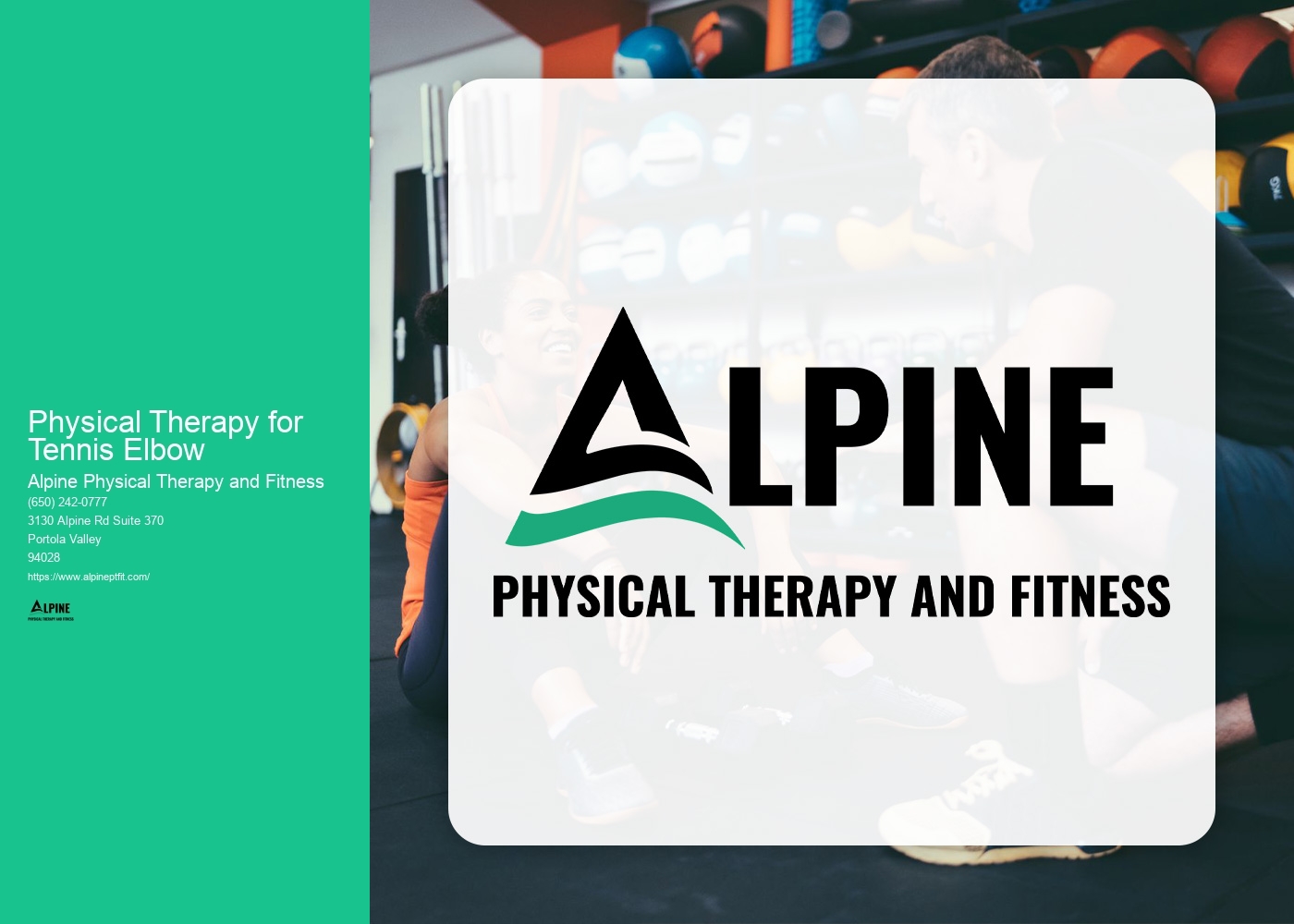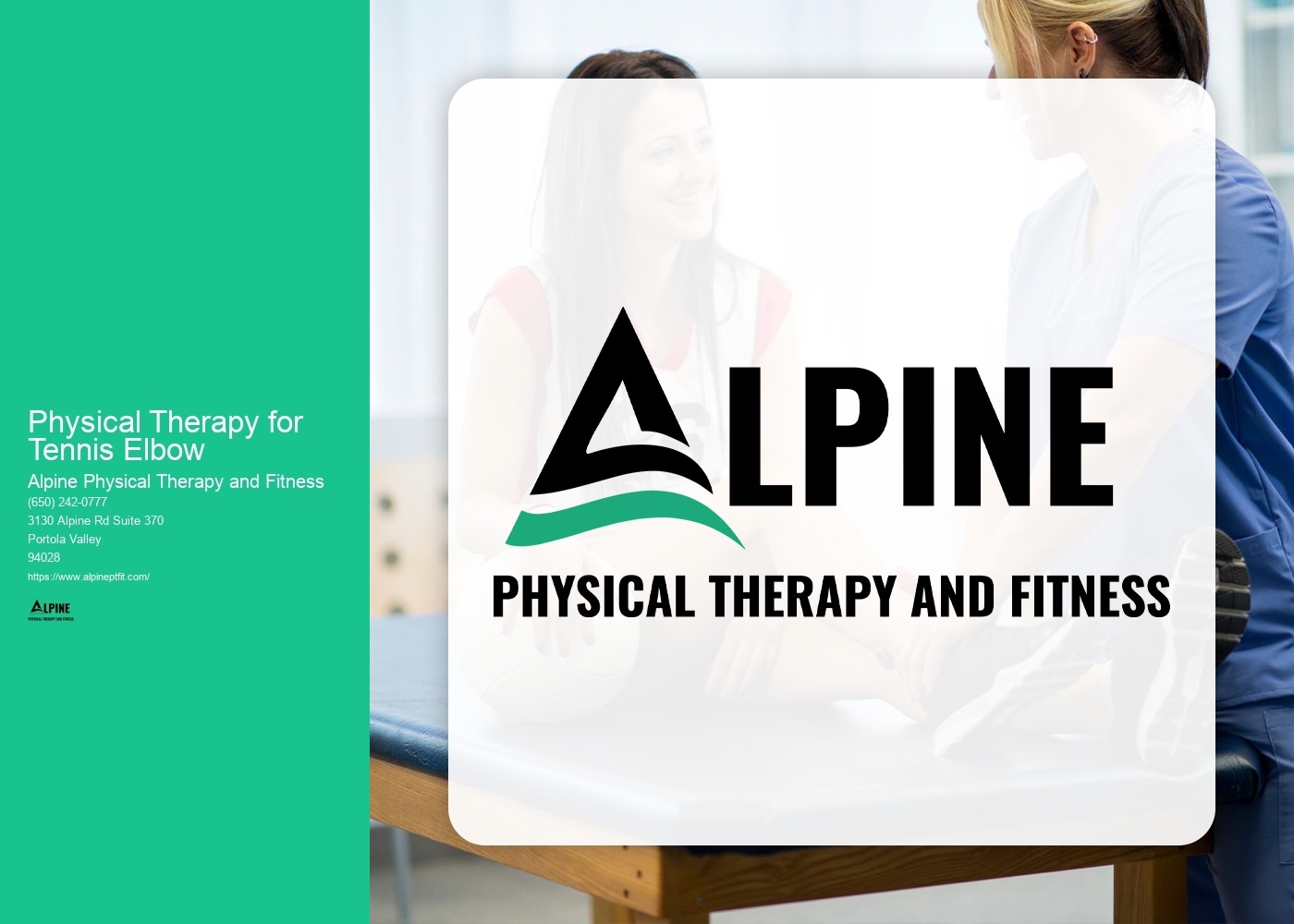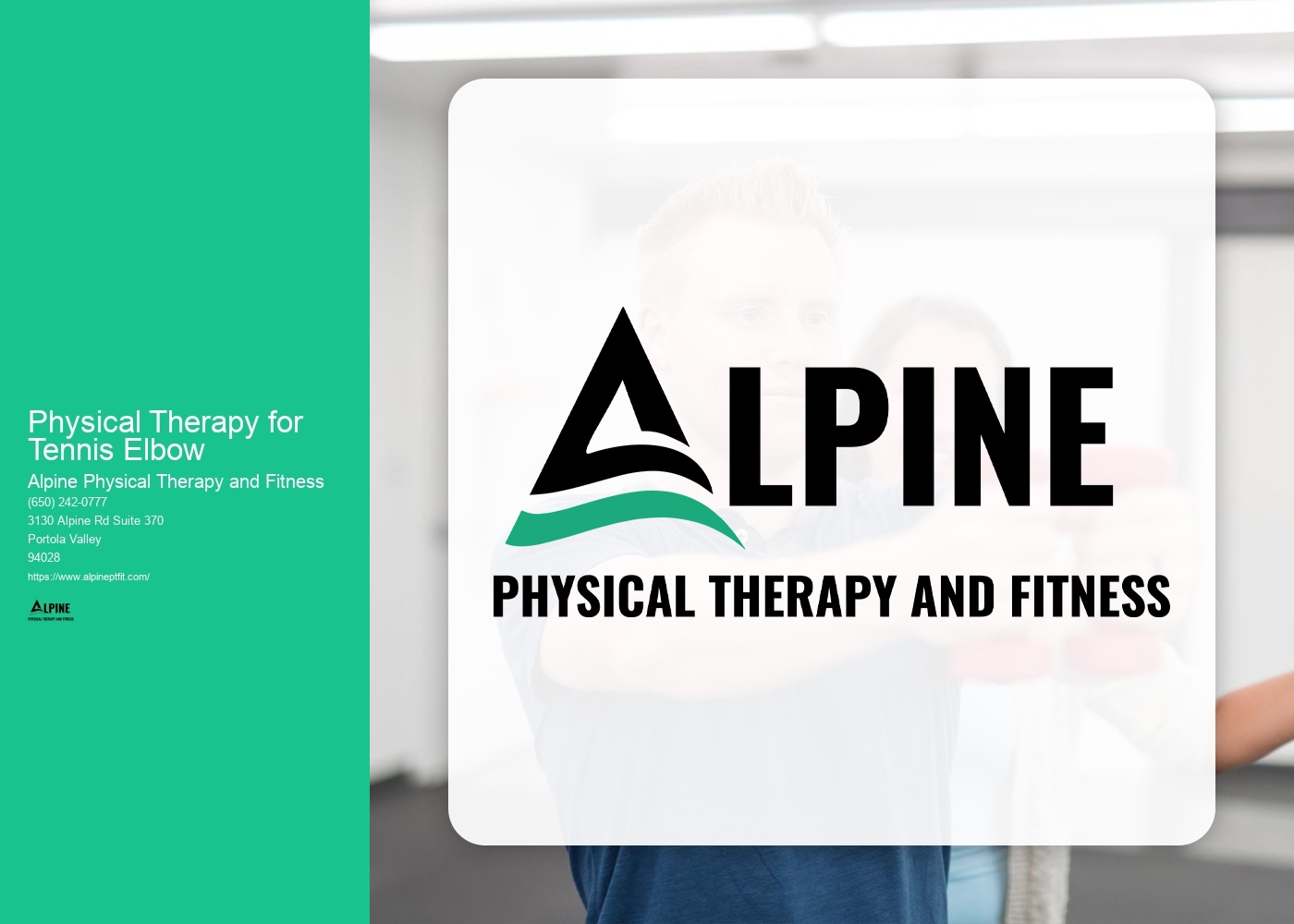

Tennis elbow, also known as lateral epicondylitis, is a condition characterized by pain and inflammation on the outer part of the elbow. It is caused by repetitive motions of the wrist and arm, particularly those involving gripping and twisting motions. These repetitive movements can lead to small tears in the tendons that attach to the lateral epicondyle, the bony bump on the outer part of the elbow. Over time, these tears can result in pain and inflammation.
Physical therapy can be an effective treatment for tennis elbow. A physical therapist will assess the individual's condition and develop a personalized treatment plan. The goal of physical therapy is to reduce pain, improve strength and flexibility, and promote healing. This may involve a combination of manual therapy techniques, such as massage and joint mobilization, as well as therapeutic exercises and stretches. Physical therapy can also provide education on proper body mechanics and ergonomics to prevent further injury.
There are several exercises and stretches that are commonly recommended for tennis elbow. These include wrist extensor stretches, forearm pronation and supination exercises, and eccentric strengthening exercises. Wrist extensor stretches involve gently bending the wrist back and holding the stretch for a few seconds. Forearm pronation and supination exercises involve rotating the forearm with a light weight or resistance band. Eccentric strengthening exercises focus on gradually lengthening the muscles while they are under tension, which can help to improve tendon strength and reduce pain.

The recovery time for tennis elbow with physical therapy can vary depending on the severity of the condition and the individual's response to treatment. In general, it may take several weeks to several months to fully recover. Physical therapy sessions are typically scheduled once or twice a week, and the individual will also be given exercises and stretches to do at home. Consistency with the prescribed treatment plan is important for optimal recovery.
During physical therapy for tennis elbow, it is important to follow any modifications or precautions recommended by the physical therapist. This may include avoiding activities that aggravate the condition, using proper form and technique during exercises, and gradually increasing intensity and duration of exercises as tolerated. It is also important to communicate any changes in symptoms or concerns to the physical therapist, as they can make adjustments to the treatment plan as needed.

While physical therapy can be an effective treatment for tennis elbow, it may not be the only treatment necessary. In some cases, additional interventions such as corticosteroid injections or nonsteroidal anti-inflammatory medications may be recommended to help manage pain and inflammation. Rest and activity modification may also be necessary to allow the tendons to heal. The physical therapist will work closely with the individual and their healthcare team to determine the most appropriate course of treatment.
To prevent tennis elbow from recurring in the future, it is important to make certain lifestyle changes and adopt healthy habits. This may include using proper technique and equipment during sports or activities that involve repetitive wrist and arm movements, taking regular breaks to rest and stretch during repetitive tasks, and maintaining overall strength and flexibility through regular exercise. It is also important to listen to the body and avoid overexertion or pushing through pain. By taking these precautions, individuals can reduce the risk of developing tennis elbow again in the future.

Physical therapy can be an effective treatment option for individuals suffering from adhesive capsulitis of the shoulder, also known as frozen shoulder. This condition is characterized by pain, stiffness, and limited range of motion in the shoulder joint. Physical therapy interventions such as joint mobilizations, stretching exercises, and strengthening exercises can help improve shoulder mobility, reduce pain, and restore function. Additionally, modalities like heat therapy, cold therapy, and electrical stimulation may be used to alleviate pain and promote healing. The physical therapist will develop a personalized treatment plan based on the individual's specific needs and goals, ensuring a comprehensive and targeted approach to managing adhesive capsulitis.
The Graston Technique is a specialized form of manual therapy that is commonly used in physical therapy to treat a variety of musculoskeletal conditions. This technique utilizes specially designed stainless steel instruments to effectively detect and treat soft tissue restrictions and adhesions. The Graston Technique can be applied to various areas of the body, including the neck, back, shoulders, hips, knees, and ankles. It is particularly effective in addressing conditions such as plantar fasciitis, carpal tunnel syndrome, tennis elbow, rotator cuff injuries, and Achilles tendonitis. By using the Graston Technique, physical therapists are able to effectively break down scar tissue, improve range of motion, reduce pain, and promote tissue healing.
Physical therapy plays a crucial role in managing spinal cord injuries by providing comprehensive rehabilitation and promoting functional recovery. The primary goal of physical therapy is to improve the patient's mobility, strength, and overall physical function. This is achieved through a variety of techniques, including therapeutic exercises, manual therapy, and assistive devices. Physical therapists also focus on addressing secondary complications that may arise from spinal cord injuries, such as muscle weakness, spasticity, and loss of balance. They work closely with the patient to develop personalized treatment plans that target specific impairments and help them regain independence in activities of daily living. Additionally, physical therapy plays a vital role in educating patients and their families about proper body mechanics, injury prevention, and adaptive strategies to enhance their quality of life. Overall, physical therapy is an essential component of the multidisciplinary approach to managing spinal cord injuries, aiming to optimize functional outcomes and promote long-term well-being.
Physical therapy can be a valuable treatment option for women experiencing painful sexual intercourse, also known as dyspareunia. By addressing the underlying causes of the pain, physical therapy aims to improve sexual function and overall quality of life. A skilled physical therapist can assess the pelvic floor muscles and identify any muscle imbalances, tension, or weakness that may be contributing to the pain. Treatment may involve a combination of manual therapy techniques, such as myofascial release and trigger point release, to release muscle tension and improve flexibility. Additionally, therapeutic exercises can be prescribed to strengthen and stabilize the pelvic floor muscles, promoting better control and coordination during sexual activity. Education on relaxation techniques, breathing exercises, and proper body mechanics may also be provided to help women manage pain and optimize sexual function. Overall, physical therapy offers a holistic approach to addressing dyspareunia, focusing on the physical and emotional well-being of women.
Aquatic therapy has been found to be an effective method for balance training in older adults. The buoyancy provided by the water helps to reduce the impact on joints, making it a safe and low-impact option for individuals with balance issues. The resistance of the water also provides a gentle challenge to the muscles, helping to improve strength and stability. Additionally, the hydrostatic pressure of the water can enhance proprioception and body awareness, which are important factors in maintaining balance. Overall, aquatic therapy offers a unique and beneficial approach to balance training for older adults.
Physical therapy plays a crucial role in the post-surgery rehabilitation for rotator cuff repair. Following a rotator cuff repair surgery, physical therapy aims to restore the strength, flexibility, and range of motion of the shoulder joint. The physical therapist will design a personalized exercise program that includes a combination of stretching, strengthening, and mobility exercises. These exercises target the muscles and tendons surrounding the rotator cuff, helping to improve muscle strength, increase joint stability, and promote healing. Additionally, physical therapy may include modalities such as heat or cold therapy, ultrasound, or electrical stimulation to reduce pain and inflammation. The therapist will also provide education on proper body mechanics and techniques to prevent re-injury. Overall, physical therapy is essential in facilitating the recovery process and optimizing the functional outcomes for individuals undergoing rotator cuff repair surgery.